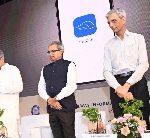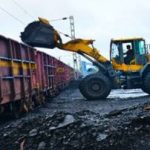Mumbai: JSW Steel Limited Friday reported its financial results for the First Quarter ended 30th June.
Key Highlights for Q1 FY23
Standalone Performance:
Crude Steel Production: 5.00 million tonnes(mt)
Saleable Steel Sales: 4.03 mt
Revenue from Operations: Rs 31,105 crores
Operating EBITDA: Rs3,352 crores
Net Profit after Tax: Rs956 crores
Consolidated Performance:
Crude Steel Production: 5.77 mt
Saleable Steel Sales: 4.49 mt
Revenue from Operations: Rs38,086 crores
Operating EBITDA: Rs4,309 crores
Net Profit after Tax: Rs839 crores
Net Debt to Equity: 0.98x and Net Debt to EBITDA: 2.03x
During the first quarter of FY2023, high inflation across major economies on the back of supply chain disruptions and the Russia-Ukraine conflict has impacted the global economic outlook. While India has been relatively resilient with economic activity recovering from the Covid induced slump, high inflation and policy rate tightening across the world have become formidable headwinds.
The domestic steel industry was impacted by falling global prices and the imposition of a 15% duty on certain steel exports in May 2022 further exacerbated the situation with a steep fall in exports, of 26% QoQ. The export duty on steel products is expected to be a temporary measure to contain inflation and may be removed once inflation cools down. Inherent demand from auto and construction & infrastructure segments remains strong that should support overall steel consumption during FY23.
India’s steel consumption during Q1 FY23 was 27.36 million tonnes, down 5.6% QoQ, while exports fell 26% to 2.88 million tonnes due to the weaker global demand and imposition of export duty.
Considering volatile market conditions, the Company preponed certain shutdowns that were scheduled during the year, which lowered the average capacity utilization (excluding Dolvi Phase-II) for Q1 FY23 to 93% from 98% in Q4 FY22. The 5mtpa Dolvi Phase-II expansion continued to ramp up and will drive volume growth as demand recovers in the coming quarters.
Operational Performance Q1 FY23:
The details of standalone production and sales volumes for the quarter are as under:
Particulars (Million tonnes) Q1FY23 Q4FY22 %QOQ Q1FY22 %YOY
Production: Crude Steel 5.00 5.01 – 4.10
Total Saleable Steel Sales 4.03 5.11 -21% 3.61 12%
Standalone Performance Q1 FY23:
The Crude Steel Production was at 5.00 million tonnes, up 22% YoY, however marginally lower sequentially due to preponement of certain maintenance shutdowns.
Sales of saleable steel at the Standalone level were 4.03 million tonnes for the quarter, up 12% YoY but down 21% QoQ, primarily due to a sharp drop in export volume following the imposition of the 15% export duty from 22nd May 22, and deferral of procurement by user industries on expectations of further fall in steel prices.
The Company registered Revenue from Operations of ₹31,105 crores, lower by 14% QoQ, impacted mainly by lower sales volumes, however partly offset by higher average sales realization.
The Company registered Operating EBITDA at ₹3,352 crores for Q1 FY23, a reduction of 51% QoQ with an EBITDA margin of 10.78%. The EBITDA margin was lower primarily due to a steep increase in coal and energy prices, mark-to-market unrealized loss on outstanding foreign currency loans due to rupee depreciation by ~4%, Net Realisable Value (NRV) provisions on closing inventory due to significantly lower prices at quarter-end, and payment of export duty.
The Company reported net Profit after Tax of Rs956 crores for the quarter.
Bhushan Power & Steel Ltd (BPSL):
During the quarter, BPSL registered Crude Steel Production of 0.61 million tonnes and Sales volume of 0.48 million tonnes. Revenue from Operations and Operating EBITDA for the quarter stood at ₹4,704 crores and ₹698 crores, respectively. BPSL reported a Profit after Tax of ₹221 crores for the quarter.
Update on Projects:
The 5mtpa brownfield expansion at Vijayanagar is progressing well, with civil works underway at the site. Long lead-time items have been ordered, and Letters of Credit established. The project is expected to be completed by end of FY2024.
The remaining downstream projects at Vasind and Tarapur are expected to be completed in Q2 FY23.
The expansion at BPSL to 3.5mtpa is progressing well and is expected to be completed during Q2 FY23. The Phase-II expansion (from 3.5mtpa to 5mtpa) is expected to be completed by FY24.
The Company’s capex spend was ₹3,702 crores during Q1 FY23, against the planned capex spend of ₹20,000 crores for FY 23. Considering the current market conditions, the company expects to calibrate its capex spend to ₹15,000 crores for FY23.
Outlook
The global economic outlook has weakened due to high inflation across most economies, with elevated energy and food prices affecting consumption. The ongoing Russia-Ukraine conflict and frequent Covid related lockdowns in China have disrupted global supply chains, and caused spikes in energy prices. The World Bank, in its June outlook, has reduced its global growth forecast to 2.9%, from 4.1% in January.
In the United States, while PMI and IIP data still remains positive, the trend has been declining over the last few months. Aggressive tightening by Federal Reserve to tame high inflation is likely to impact investments and consumption. The Services sector remains healthy due to pent up demand, but high inflation is eroding purchasing power and consumer confidence. The employment and jobs data remains robust so far.
European countries have been more severely impacted by higher energy costs emanating from the Russia-Ukraine crisis in their backyard. Policy rate tightening by the ECB, BoE and other central banks to control inflation will impact economic growth. The Services sector has been resilient so far but could weaken due to high inflation.
China’s “zero-Covid strategy” is hurting economic activity as well as consumer confidence. The recent fiscal and monetary stimulus and step up in policy action by the government to stimulate growth is expected to drive a gradual recovery in the coming quarters.
The risks of a recession in advanced economies have risen in the last few months. Inflation coming off sharply, higher energy supply, easing Covid situation in China and de-escalation of geopolitical tensions are positives to stave off recessionary conditions.
Despite weakening global macroeconomic trends, India remains relatively resilient so far and continues to be the fastest growing major economy in the world with manufacturing, consumption and services sectors showing healthy traction. The Government’s focus on infrastructure and social investments should continue, supported by healthy tax collections, despite some pressures to the fiscal balance. Merchandise exports from India continue to remain healthy, with re-alignment of global supply chains offering significant long term opportunities. The outlook for two-wheelers is showing positive signs on the back of healthy revival in rural demand, while the demand for passenger vehicles continues to remain high, even as commercial vehicles demand has seen some softness. The residential real estate sector remains strong with falling inventories, increasing new project launches and limited impact of rising interest rates so far. Healthy power consumption growth should drive investments in new capacities, especially renewables. However, high inflation and energy costs are having some impact on domestic consumption. Policy rate tightening by the RBI and global central banks along with slowing global growth could impact near-term GDP growth.
About JSW Steel:
JSW







